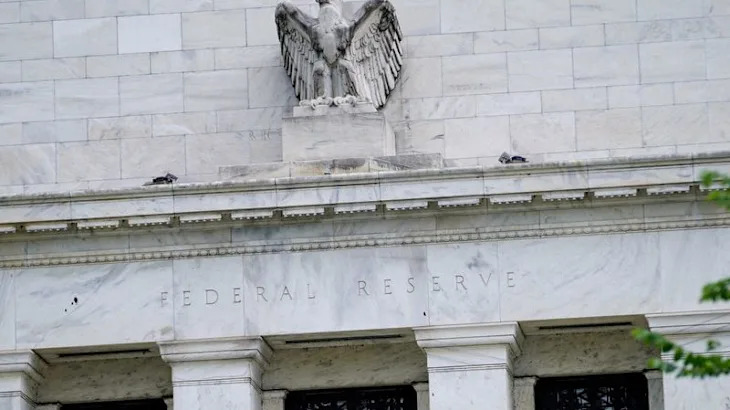By Amanda Cooper
LONDON (Reuters) - One of the Federal Reserve's preferred recession indicators has this week deteriorated as fast as it did in 2008, the latest sign that bond investors are bracing for a sharp economic slowdown as a result of U.S. President Donald Trump's sweeping tariffs.
There are many metrics economists and investors use to try to predict a downturn. The gap between two-year and 10-year Treasury yields for instance, is a bond market favourite.
Fed Chair Jerome Powell is said to favour the difference between the yield on three-month Treasury bills and their expected yield in 18 months.
The rationale is that this spread best reflects very near-term rate expectations in a way the gap between two-year and 10-year Treasuries does not.
When recession is looming, the spread narrows and turns negative. However, the Fed's rate-hiking cycle that started in March 2022 flipped this spread into negative territory and kept it there as yields on T-bills were still high.
On Friday, this spread was at minus 113 basis points, its most negative since last October, but crucially, set for its biggest one-day increase since late 2008, when the global financial crisis roiled markets.
"It's usually 3-18 months after the last Fed hike until the start of the recession ... we are at 21 months and counting so far – no more soft landing folks?" Jordan Rochester head of fixed income, currencies and commodities strategy for EMEA at Mizuho, said in a note on Friday.
Investment bank JPMorgan on Friday said the risk of a U.S. and global recession this year has risen to 60% from 40% based on Trump's reciprocal tariffs.
Just last week, U.S. rate futures suggested traders were assuming the Fed would cut rates by another 65 basis points this year and then hit the pause button.
They now price in 100 bps of cuts by December, and another 25 bps over the first quarter of 2026, which, if it materialised, would bring U.S. rates to a range of 2.75-3.35%, roughly where they were 2-1/2 years ago.
Banking stocks, which tend to perform well when interest rates are rising, fell sharply around the world on Friday, as recession fears and expectations for deeper rate cuts took hold.
Derivative markets for other central banks painted a similar picture, with the European Central Bank and the Bank of England expected to chop rates three more times this year, from around twice previously.
Zurich Insurance Group chief market strategist Guy Miller said many investors had thought Trump would use tariffs as a negotiating tool and then scale back his threats, but that clearly was not the case.
"These are fairly brutal and clunky weapons that are trying to change the shape of trade but are likely to backfire," he said.
"It is going to lead to inflation and squeeze real incomes in the U.S. So it creates a vicious circle and a dangerous one."
(Additional reporting by Dhara Ranasinghe; Editing by Tomasz Janowski)


